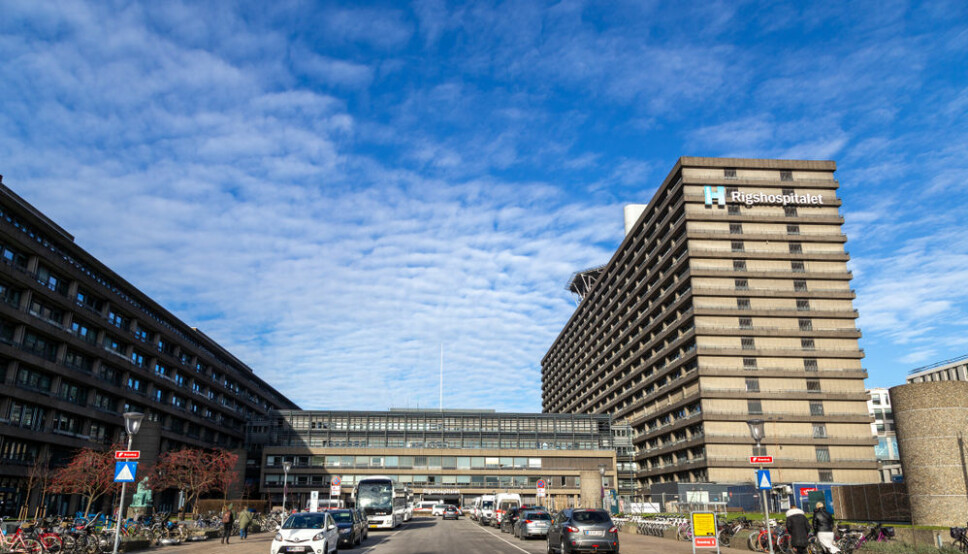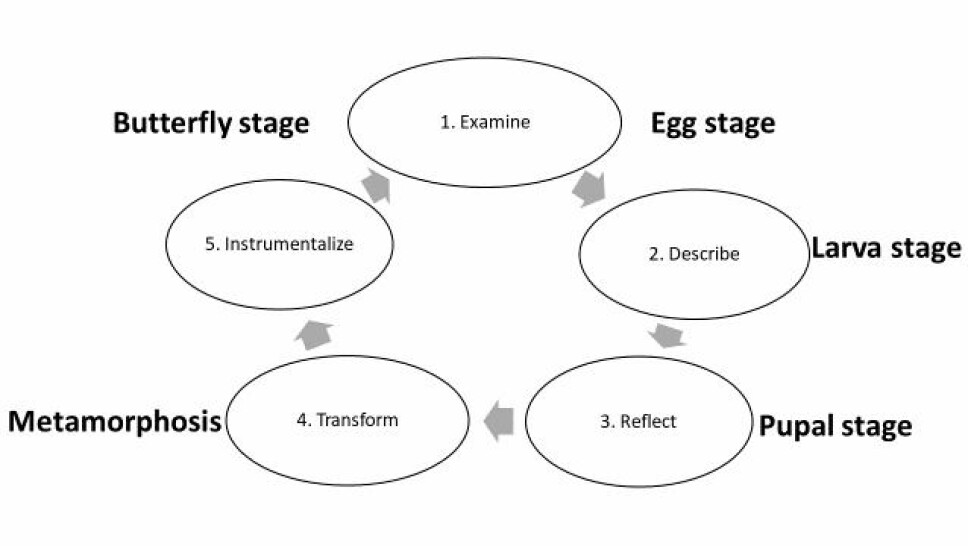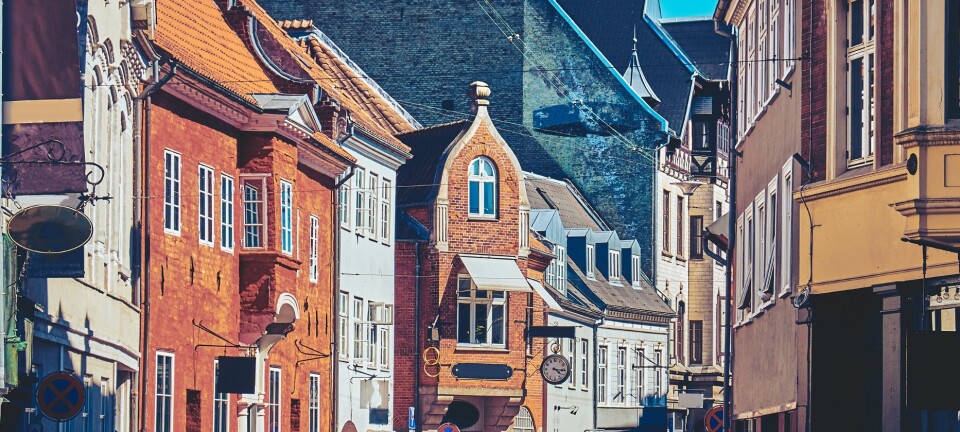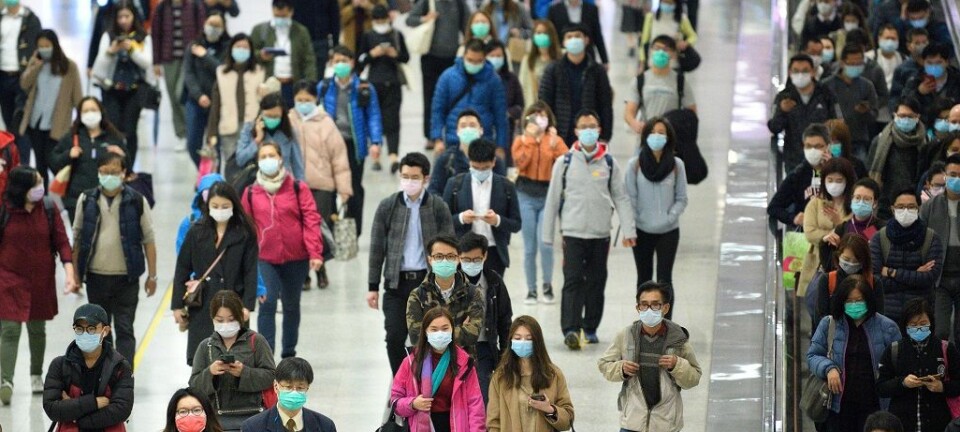Researchers' Zone:

Why has the Danish welfare model remained so strong against Covid-19?
A CBS researcher has developed a ‘butterfly model’ that she believes can answer precisely that question – and help prepare the rest of the world for similar crises.
Coronavirus is an invisible enemy that can hide in plain sight in any of us. It has sparked a war against immune systems and vaccines.
We must ask ourselves what lies ahead.
My research shows that Denmark’s secret weapon is the Danish welfare model, which is currently taking a victory lap around the world thanks to its effective preparedness for the Coronavirus crisis.
The secret weapon involves co-production with a special DNA between the voluntary sector’s independent non-profit welfare institutions and municipalities – co-production that I refer to as the butterfly model.
This cooperation covers about 30-40 per cent of all welfare tasks in Denmark, with the remainder generally taken care of by the public sector.
The question is: How do we maintain and improve this special welfare model, which has served us and continues to serve us so well as a society during the rapid changes currently occurring?
A 15-year research journey
For many years, I have been interested in collaborations between the public sector and independent non-profit welfare institutions.
I have been involved as a lawyer and lobbyist at Danish Commerce, as Secretary General of Menighedernes Daginstitutioner (an umbrella organisation for the churches’ day-care institutions) and through my engagement in various kinds of voluntary social work.
The realisation that the contract form regulating such collaborations was not sufficiently flexible in a time of change piqued my interest in the phenomenon of co-production.
That became a journey lasting 15 years.
Together with CBS and other parties, my task was to support and develop the collaboration into co-production between 100 independent day-care centres and Copenhagen, Svendborg and Århus municipalities.
This led me to research the unique nature of these and similar collaborations between the voluntary and public sectors.
What is co-production?
In Denmark and a range of other Western welfare states, various initiatives are being launched under the heading ‘co-production’ and have been for some years.
Co-production involves developing collaboration on welfare across the public and voluntary sectors to add value as public value.
In other words, attempting to gain more welfare from the collaboration as an interplay between the public and voluntary sectors than would be obtained by leaving them to solve their tasks individually.
But what does co-production have to do with the coronavirus pandemic?
Denmark’s secret weapon
There are major differences in how the Nordic countries have addressed the Covid-19 pandemic compared with Southern Europe, for example, where it has been necessary to introduce far stricter restrictions and curfews.
The human costs have been much greater, with more deaths and more widespread isolation, than in Denmark.
To some extent, this is linked to when the pandemic hit the individual countries, and how fast they managed to respond to the growing infection rates. However, welfare models and trust are also involved.
My research reveals that the Danish welfare model contains special DNA with threads that interlink municipalities, voluntary organisations and citizens in collaborations concerning day-care centres, nursing homes, health services and permanent and temporary residential homes etc.
This DNA enables people to care for each other in another way than through collaboration regulated solely by economic and legal considerations. Its basic principle of solidarity means that Denmark and its citizens can co-produce in relation to a coronavirus pandemic with a welfare model in which welfare is for everyone.
That inspires trust between the citizens and authorities, which is necessary for those of us in Denmark and the Nordic countries in general to ride out the Covid-19 storm (with the exception of Sweden, but that is a long story).
The specific importance of trust was explored in an article here on ScienceNordic by professor Gert Tinggard Svendsen entitled ‘Researcher: Denmark's world-record level of trust is helping us in the fight against corona’.
The welfare butterfly has spread its wings under coronavirus
To illustrate this, I have created a model that draws parallels with the world of butterflies.
My butterfly model shows that the DNA of our welfare model contains imaginary cells that can transform collaborations into co-production, cohesion and trust – just as caterpillars transform into butterflies. That development protects us while a crisis is raging.
When this happens, the object of the co-production can refer back to the stipulations stated in the contract – for example that the children in a day-care centre are to have two kindergarten teachers available in each playroom – while also meeting demands made on the collaboration that are more unpredictable, and that arise during the process.
A concrete example from the Covid-19 crisis is that various citizens involved themselves spontaneously and set up a website to help both parents with practical issues, because children had to stay home during the pandemic, as well as other citizens who needed support in a range of ways.
No contract requires them to take such action but people step in to help.
What happens locally in day-care centres during the Covid-19 crisis between parents, employees, children and citizens can inspire more general policy initiatives.
When featured on the TV news, they inspire policymakers and others in the local community to help each other in similar ways.
From egg to butterfly in five steps
The five steps of my butterfly model illustrate how co-production arises. The following describes a specific example from Svendborg Municipality to show how the five steps work in practice:

1. The egg stage – examine:
The egg stage is the first stage of the butterfly process and involves examining the conditions for the collaboration.
For example, the network of four independent day-care centres, collectively named The Lighthouse, and Svendborg Municipality had engaged in a lengthy dispute about savings and children. A great deal of time had been spent arguing about the matter in the local media and at large meetings.
Now, the parties decided to collaborate based on co-production. They listened to each other and explained about new aspects that were important for the collaboration on day-care centre services.
2. The larva stage – describe:
When the caterpillar has hatched, it begins eating its way through life. Collaborations have a similar hunger for resources in many ways.
Svendborg Kommune described the need for savings, a more efficient management level and documentation required by new learning plans intended to ensure professionalism at the day-care centre.
A political code was also described that covered managing the centres, a legal code specified that legislation posed demands, and a professional code covered documenting the quality of the kindergarten teachers’ work. A financial code also played a role in relation to the savings.
The Lighthouse described a care code in the form of the parents and management insisting on providing care for the children on their own terms. This existed alongside a political code involving a preference for self-governance.
Together, the parties created a mutual understanding about how the codes could create tensions and conflict during collaboration.
3. The pupal stage – reflect:
This is when the threads are spun, creating the space required for the subsequent transformations in the collaboration, when The Lighthouse and the municipality empathised with each other and together drew up a partnership agreement.
Further training and follow-up research paved the way for this new way of collaborating to take off.
4. Metamorphosis – transform the collaboration:
Just as the cells containing DNA constantly created and recreated the caterpillar, the collaboration can regenerate itself by activating the imaginary cells that control the metamorphosis.
For the collaboration in Svendborg, this initiated a transformation in which the other party’s perspective must be included when formulating the context of your own view as it develops, enabling the collaboration to transform into co-production.
5. The butterfly stage – instrumentalise:
When the metamorphosis is complete, the pupa splits open, the butterfly appears and its wings unfurl and dry. Space is provided for developing new solutions within the collaboration since the space has opened up for this purpose with new insight.
For example, The Lighthouse was gifted an allotment garden by a generous elderly benefactor named Erna. This was supported by the municipality, even though it was not a standard feature of the municipality’s day-care policy, contracts or legislation that day-care centres should work with allotment gardens.
It became a venue for both new social and day-care policies that were not conceived in a town hall. Single mothers and members of ethnic minorities with children at the day-care centres were welcome to learn the value of small gardens and meet up outside day-care opening times. The kindergarten teachers also used the allotment when working with the children during opening times.
It was a way of collaborating that generated added value as co-production that no one had anticipated. Co-production must be allowed to surprise. Yet not everything produced through unexpected results in a collaboration can be considered to add value. Perhaps the allotment created value for the community when it was donated to The Lighthouse’ day-care centres, but it could now be the opposite – a burden. With the butterfly model, it would be possible to manage a collaboration that continuously generates new and unexpected conditions and options.
Crisis preparedness for the future
The butterfly model can therefore also function as a kind of vaccine against a Coronavirus pandemic. It can achieve this by creating a strong communal ‘immune system’ that manages the unexpected.
DNA like this should not be taken for granted in a community. With this ‘vaccine’, we can contribute solutions to welfare crises that are increasingly originating elsewhere in the world but that affect us in Denmark – such as the Covid-19 pandemic (thesis chapter 13 pages 303-313).
Why not get started?
My PhD thesis takes the first step towards building a foundation for Denmark to pioneer co-production based on the butterfly model’s DNA.
On the one hand, it involves new theoretical knowledge development that requires further refinement in theory and empirical testing.
On the other hand, it is firmly rooted in the empirically sound Danish welfare model and also stands on the shoulders of skilled Danish welfare practitioners and researchers.
I therefore suggest that a platform should be established between voluntary organisations and independent welfare centres and municipalities wishing to co-produce with this DNA.
This platform must be supported by policymakers, universities and educational centres to spread the butterfly model’s ripple effect far and wide.
Based on the model, such a platform could be launched within the space of one year, supported by training and managerial programmes, guidance and collaboration between the parties. So, why not get started?
Read the Danish version of this article at Videnskab.dk’s Forskerzonen. Translated by Helen Dyrbye.
References:
Charlotte Biil's profile (CBS)
'Hvilken værdi skaber vi med samskabelse?', Professionshøjskolen Absalon (2018)
———







